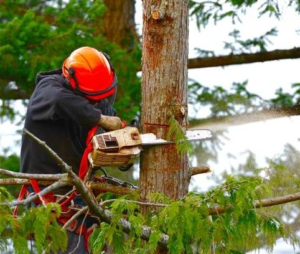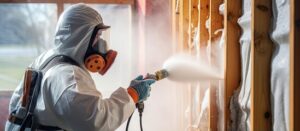When most people think of noble professions, doctors, first responders, and teachers immediately come to mind. However, the plumbing industry should also be mentioned for its crucial work in maintaining healthy living.
A plumbing plan illustrates the piping to bring water in and remove waste. With EdrawMax’s many templates, symbols, and scalable options, creating such a plan is easy. Contact Olmsted Plumbing now!

The vent system is an integral part of any plumbing system. Without it, wastewater may not drain properly, and odors could build up in the house. The vent system equalizes air pressure in drain pipes to prevent vacuum locks and siphoning, and allows sewer gases to escape into the open. The ventilation system also protects the trap seals in drain pipes and provides a route for moisture to escape the home.
Plumbing vents are essentially pipes that extend from different plumbing fixtures to the roof or exterior walls of the building, depending on the design and layout of the building. Several types of plumbing vents are available, but they all serve the same function. Understanding what a plumbing vent is and its role in your home can help you identify problems and repair them before they become severe.
There are two main types of plumbing vents: a vent stack and an air admittance valve. A vent stack is the most common option, as it connects directly to the drain line and runs through the roof to outside the house. It’s usually located away from windows and air conditioning systems to prevent the re-entry of sewer gases. An air admittance valve is a smaller version of a vent stack, and it’s designed for use with single-room fixtures like sinks and bathtubs. It connects to the drain line behind the fixture and carries air up to the vent stack.
Both types of plumbing vents need to be installed by a licensed plumber to ensure that the system is compliant with local and national plumbing codes. The vent system needs to be sized correctly to ensure that it can handle the water and waste loads, as well as provide enough air flow. The vents need to be free of obstructions, and the entire system must be tested for leaks.
Getting your plumbing venting system in place is an essential part of any new construction or remodeling project. When done correctly, it will help ensure that the drainage system works properly and keeps your home smelling fresh and clean.
Fixtures
From sinks and toilets to bathtubs and showers, plumbing fixtures are the unsung heroes that make up your home’s water supply. These devices are a necessity for delivering clean water and removing waste, and they are available in a wide variety of styles and designs to suit any aesthetic. The right fixtures can make your home more comfortable and efficient, and they may even improve its resale value.
Generally speaking, any device that is connected to a home’s water supply or drainage system can be considered a plumbing fixture. This includes items such as toilets, showers, kitchen sinks, faucets, and even urinals. However, there are certain types of plumbing fixtures that are more common than others. For example, most homes have toilets, sinks, and showers, while fewer have garbage disposals or dishwashers.
When selecting new plumbing fixtures, it is important to keep in mind how you plan to use them. For example, if you have young children, you might want to choose durable fixtures that can withstand frequent use. You can also reduce your energy bills by opting for low-flow showerheads and toilets.
Most modern plumbing fixtures are designed with water conservation in mind. This means they use less water while still providing the same functionality as older models. It is also a good idea to select fixtures that are CSA approved, as this will ensure they meet minimum performance standards.
Another consideration when choosing plumbing fixtures is the price. While it is tempting to save money by buying cheaper options, quality fixtures will last longer and offer better performance. Additionally, many reputable manufacturers offer warranties on their products, so you can be confident in your purchase.
It is also a good idea to choose fixtures that are easy to maintain. This will help you avoid costly repairs in the future, and it will also ensure that your fixtures are operating properly. For example, if you have a sink with an exposed drain, be sure to keep it clean and free of debris. It is also a good idea to regularly inspect your fixtures for signs of leaks or other problems. If you notice any issues, be sure to contact a plumber as soon as possible.
Valves & Pipes
Valves are mechanical fittings that control, direct and regulate the flow of fluids through a pipe. They’re employed in a broad range of residential and commercial settings like houses, wastewater treatment plants and car production factories to shut off water access, guide flow, prevent reversal and alter water pressure within a system.
There are many different valve types, and each performs a distinct function in the plumbing system. For example, a gate valve consists of a wedge-shaped metal gate that can be raised or lowered to regulate the direction and amount of water flow. Other valves include globe valves, ball valves and relief valves.
In addition to function, valves can also be categorized based on their type of operating mechanism, end connections, mechanical motion, construction material and pressure and temperature ratings. These classifications influence how the valves work and can impact the overall efficiency of a system.
Valve end connections are an important consideration because they determine how a valve can be installed in a pipe system. For instance, a valve with a port that doesn’t match the adapter’s diameter might not fit properly. This can lead to reduced performance at best and system failure at worst.
A variety of different types of valve end connections are available, including flanges, threaded ports, unions and more. Each has its own advantages and disadvantages depending on the system’s needs and space.
Choosing the right valve can improve the overall performance of your plumbing system and help to ensure that your home is safe, secure and well-equipped to handle its plumbing needs. For example, choosing a valve with the wrong construction material or pressure rating could result in premature wear and tear, inefficient operation or even system failure.
Having the right valves in your plumbing system can reduce downtime and help your business stay profitable and productive. When selecting valves for your industrial or commercial plumbing system, consider the function, valve end connections, mechanical motion, construction materials, pressure and temperature ratings and port size to make sure they’re compatible with your piping and application. Valves that don’t fit or don’t have the correct port size can create back-pressure, restrict flow and even cause leaks.
Water Heater
The water heater is a large appliance that heats and stores hot water for use throughout the home or building. It uses natural gas, propane or electricity to heat water. It’s typically located in a garage or basement, and it holds from 20 to 80 gallons of water. The tank is insulated to reduce energy loss while the water is “waiting” for it to be used. ENERGY STAR-rated water heaters provide extra insulation to further reduce standby heat loss.
A device that turns on the heating elements when a cold water inlet valve opens, turning them off when the valve closes. It helps to keep sediment and calc (calcium carbonate) out of the water heater, as well as reduces heating costs.
This pipe carries freshwater into the hot water heater for heating and storage. It also supplies the drain valve, which can be opened to empty the tank of sediment. It’s a good idea to drain the tank at least once a year for maintenance purposes.
The round, funnel-shaped component that wraps around the vent pipe above gas-fired water heaters to prevent combustion gases from spilling into the home or back into the water heater. The duct also provides a pathway for water vapor to escape the tank, thus preventing condensation.
Strange hissing, rattling or banging noises coming from the water heater can indicate problems that require professional help, such as a defective heating element, low water pressure or a build-up of sediment and calc in the tank or pipes. A professional can also inspect the pilot light, a safety device that keeps an open flame from igniting the gas burner.



